When asked which tomato variety is the most popular and beloved, most gardeners and consumers would answer: Beefheart (also known as Oxheart). These tomatoes are distinguished by their large fruit size (up to 15 cm in diameter) and an unforgettable aroma.
The taste of these tomatoes is sweet and rich, with a tender, non-watery flesh. Their shape resembles a heart—hence the name.
Table of contents
Subtypes of Beefheart Tomatoes
There are several subtypes of Beefheart tomatoes:
- Red. The most common variety. It has a delicate pinkish-red hue, with few seeds inside. The flesh is meaty, fragrant, sweet, with a slight tang. Primarily used in salads.
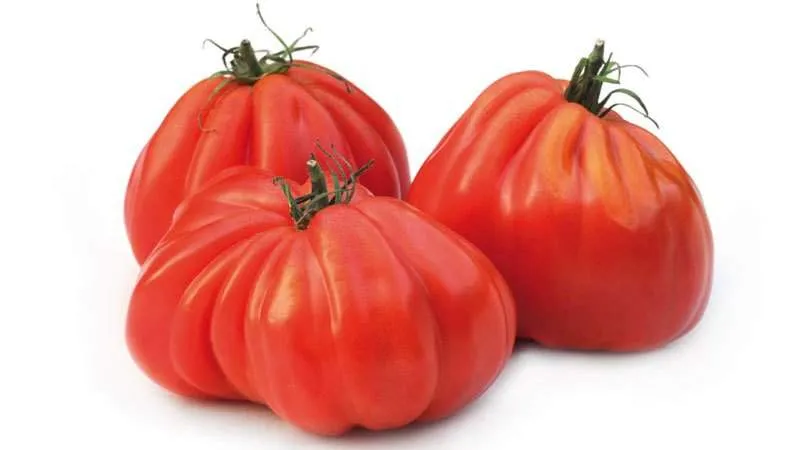
- Yellow (Golden). The Golden Beefheart has a conical shape, a rich golden-yellow colour, and a slightly ribbed surface. The skin is thin, dense, and glossy.
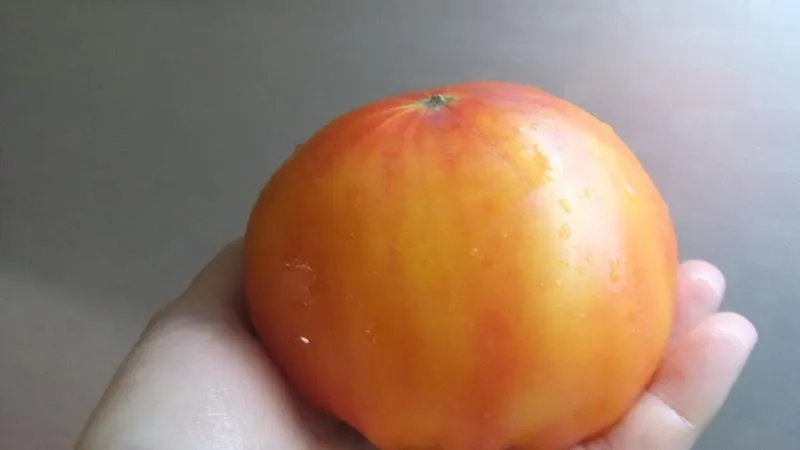
- Orange. A unique feature of this subtype is that fruits of different sizes grow on the same bush. Lower branches bear larger, flatter tomatoes, while upper ones produce smaller, rounder fruits. In taste, they resemble Mediterranean varieties.
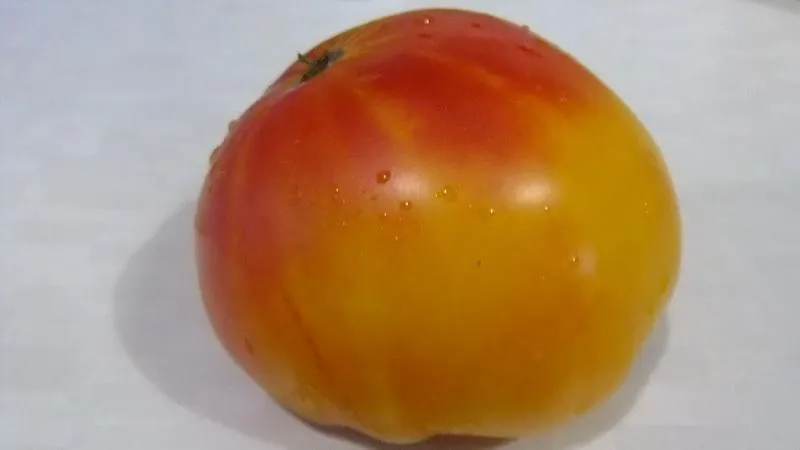
- Black. A rare dark-burgundy variety with dense, sweet flesh and a rich aroma.
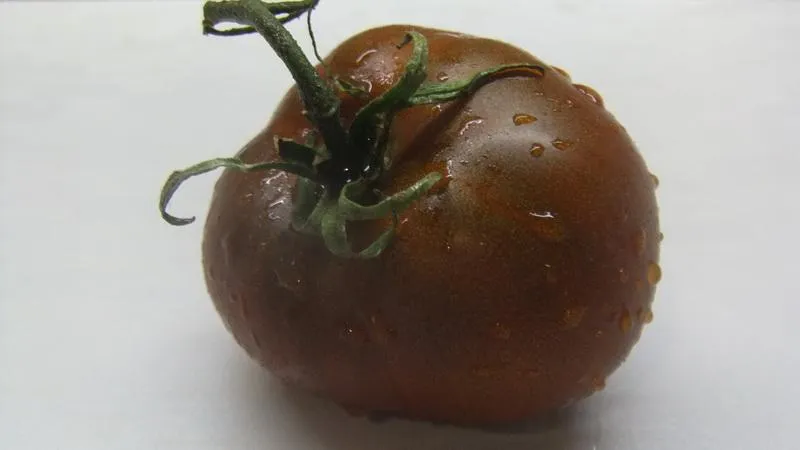
- White. An unusual, almost entirely white tomato. The light shade comes from bioactive compounds beneficial to health.
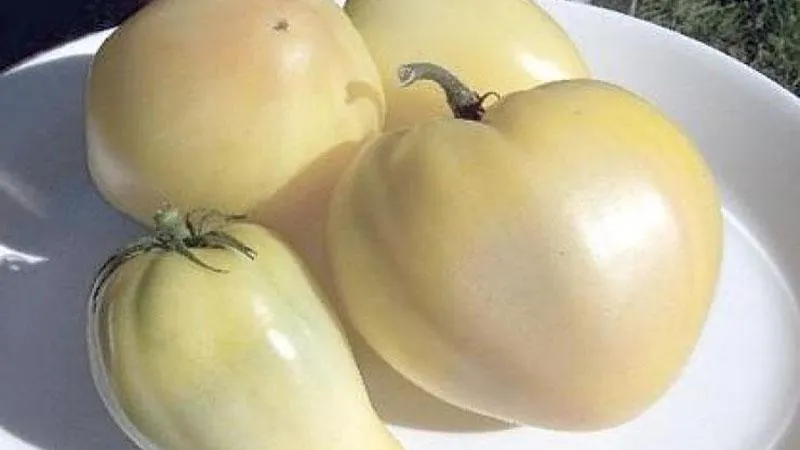
- Pink. This subtype has soft pink fruits with a mild, non-acidic taste, making them perfect for stuffing, salads, and soups.
Characteristics and Description of the Variety
All Beefheart tomato plants are tall (100–120 cm), with sturdy stems, branching foliage, and medium-sized dark-green leaves. They stop growing naturally and do not require pinching. Typically, 3–4 fruit clusters form per plant. The tomatoes ripen late, requiring 3–3.5 months to reach full maturity.
They can be grown both in greenhouses and outdoors via seedlings.
Beefheart tomatoes are resistant to diseases and pests, retaining their flavour even after processing.
Yields depend on growing conditions and care. In open fields, you can harvest up to 5 kg per plant, while greenhouse cultivation can yield up to 12 kg per plant.
The first fruits are large, while subsequent ones are smaller. Their unique heart-like shape varies even on the same plant—some smooth, others ribbed. The skin is thin yet durable and easy to peel. The flesh is dense, with few seeds (3–5 chambers per fruit). The aroma is rich and classic, the colour deep red, and the taste sweet with a tangy note.
How to Grow Seedlings
Seedlings are young plants grown from seeds, which can be purchased from a garden store or saved from ripe tomatoes.
Before planting, seeds should be soaked and disinfected in a potassium permanganate solution (10 g per litre of water) for 30 minutes.
Afterward, place the seeds on a damp cloth, cover with a lid or plastic wrap, and keep them warm (but not in direct sunlight). In 2–3 months, sprouts will emerge. Plant them in specialised vegetable soil.
Note: Use small plastic cups or wooden trays as containers.
The photo below shows an example of seedlings grown in cups.
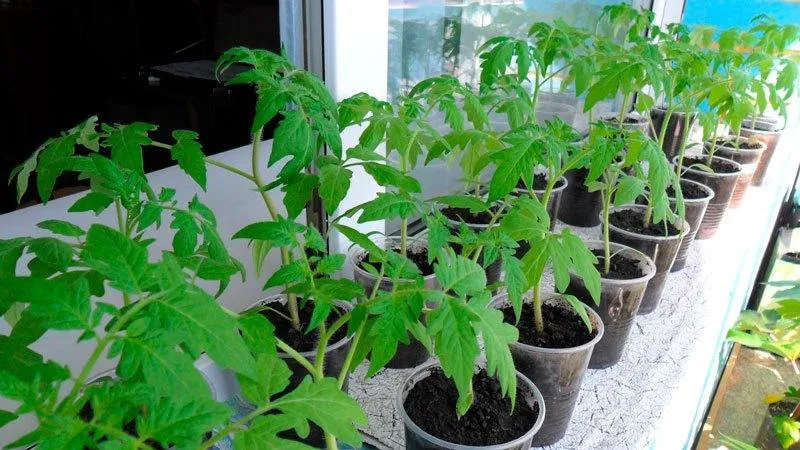
Before transplanting, warm the soil to room temperature, distribute it into containers (3 cm deep), and water with warm water. Using tweezers, place the sprouted seeds in the soil, cover lightly with dry soil, and wrap with plastic film. Once sprouts emerge, remove the film gradually to acclimatise them.
Tip: Beefheart is a late-season variety. The best time to sow seeds is early March. Transplant seedlings outdoors from late May to mid-June.
Growing Tomatoes
There are two methods for growing Beefheart tomatoes: in a greenhouse or outdoors. Below are the key aspects of each.
Outdoor Cultivation
For a successful harvest, prepare the soil in autumn by tilling with compost (0.5 buckets per m²) and potassium sulfate (2 tbsp per m²). Additionally, use fertilisers when planting seedlings.
A suitable option is Roundup (a European herbicide alternative). Apply 0.5 tsp per planting hole. The ideal soil pH is neutral to slightly acidic (6.5).
Before transplanting, treat seedlings with a solution of Fitosporin (a biofungicide).
Since Beefheart plants grow tall (up to 2 m), install supports in advance. Space plants 50 cm apart in rows facing south to north.
Plant seedlings deep enough to encourage root growth. Choose a sunny location.
Avoid overwatering—excess moisture weakens stems, while insufficient water causes dark, fuzzy leaves. Use only warm water for irrigation.
Warning: Cold water causes root rot and fruit drop.
Fertilise twice per season: first 20 days after transplanting, then a month later. Use liquid fertilisers, such as a mix of potassium (15 g), nitrogen (25 g), and phosphorus (40 g) per 10 L of water. Spray over 15 plants initially, then 7 plants in the second round.
To prevent rot, spray plants weekly with calcium nitrate during fruit growth.
The photo below shows outdoor planting.
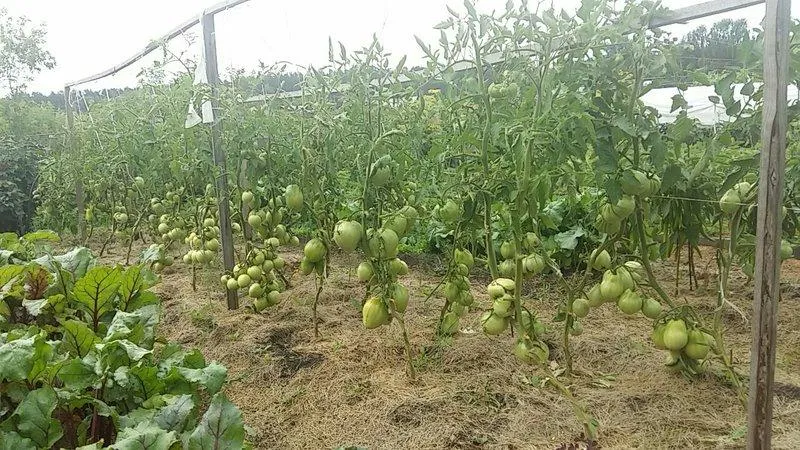
Greenhouse Cultivation
Greenhouses provide optimal conditions for Beefheart tomatoes.
Before planting, clean the greenhouse walls with soapy water and disinfect the soil with boiling water or potassium permanganate.
Transplant seedlings when they reach 20–25 cm in height. Ensure proper ventilation and lighting. Space rows 1 m apart, leaving 4–5 cm between soil and the first leaf.
Fertilise three times: - First (2–3 weeks after transplanting): 9 L water + 0.5 L manure + 1 tbsp NPK fertiliser. - Second (10 days later): 1 part chicken manure to 15 parts water. - Third: 1 part cow manure to 10 parts water. Apply 1 L per plant.
The photo below illustrates greenhouse planting.
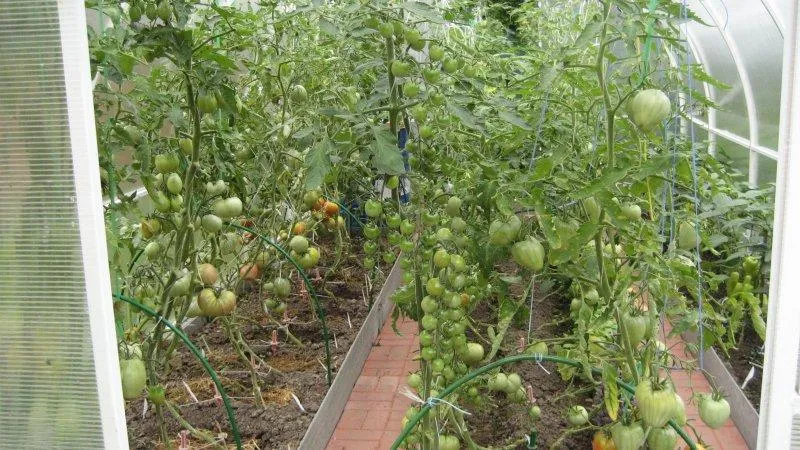
Care Guidelines
To maximise yield, follow these care tips.
Watering
Start watering after seedlings establish roots. Initially, 5–7 L per m² weekly, increasing to 12–15 L as plants grow. Water in the morning or evening at the base—avoid wetting leaves.
Ideal growth temperature: 20–22°C.
Train plants to a single stem and tie them to supports. Mulch with straw (4–5 cm thick) to retain moisture.
Soil Aeration
Loosen soil after each watering—10–12 cm deep initially, then 5–8 cm to avoid root damage. This improves soil conditions.
Note: Hand-pollinate during flowering using a brush or by tapping support stakes. Do this in the morning or evening.
Pruning
Remove side shoots (suckers) to direct nutrients to fruit production. Keep 3 main stems per plant and limit to 8 fruit-bearing branches. Leave a 1 cm stump when pruning to slow regrowth.
Pest Control
Common tomato pests and diseases include:
- Late blight – A fungal disease causing brown spots. Treat with garlic spray or salt solution. Use Bordeaux mixture sparingly (max 5 times per season). Fitosporin is also effective.
- Leaf spot – Another fungus leading to black spots near stems. Apply copper-soap spray (20 g copper sulfate + 200 g soap per 10 L water). Burn infected parts.
- Fusarium wilt – Affects young greenhouse plants, yellowing leaves. Caused by poor temperature control. Treat with Fitosporin or fungicides.
Disadvantages of the Variety
Despite their appeal, Beefheart tomatoes have some challenges:
- Late maturation limits suitability for cooler climates.
- Requires consistent fertilisation for optimal yield.
- Short shelf life (2–3 weeks when fresh).
Advantages of the Variety
The benefits far outweigh the drawbacks:
- Exceptional flavour and meaty texture.
- High productivity.
- Fruits ripen well off the vine without losing taste.
- Seeds can be saved (non-hybrid variety).
- High germination rate.
- Nutrient-rich: vitamins B, K; pectin; minerals (calcium, magnesium, iron); and fibre.
Their culinary versatility—salads, sauces, preserves—makes them a kitchen staple. Below are testimonials from gardeners.
Gardeners' Reviews
Sophie, France: "I adore Beefheart tomatoes! They mature quickly and taste incredible. Easy to grow, with high yields. This year, I tried the orange variety—sweet and perfect for low-acid diets."
Emma, Germany: "A classic among tomatoes. The red variety is my favourite—large, sweet, and ideal for salads. I recommend sourcing seeds from reputable European suppliers for best results."
Clara, Spain: "As a beginner, I chose Beefheart for its reliability. Despite poor soil, my 20 plants thrived with basic care. The fruits were sugary and perfect for fresh dishes!"
Conclusion
With proper care—seed preparation, soil fertilisation, pruning, and pest control—Beefheart tomatoes reward growers with bountiful, delicious harvests. Their nutritional value and culinary flexibility make them a garden essential. Happy growing!







